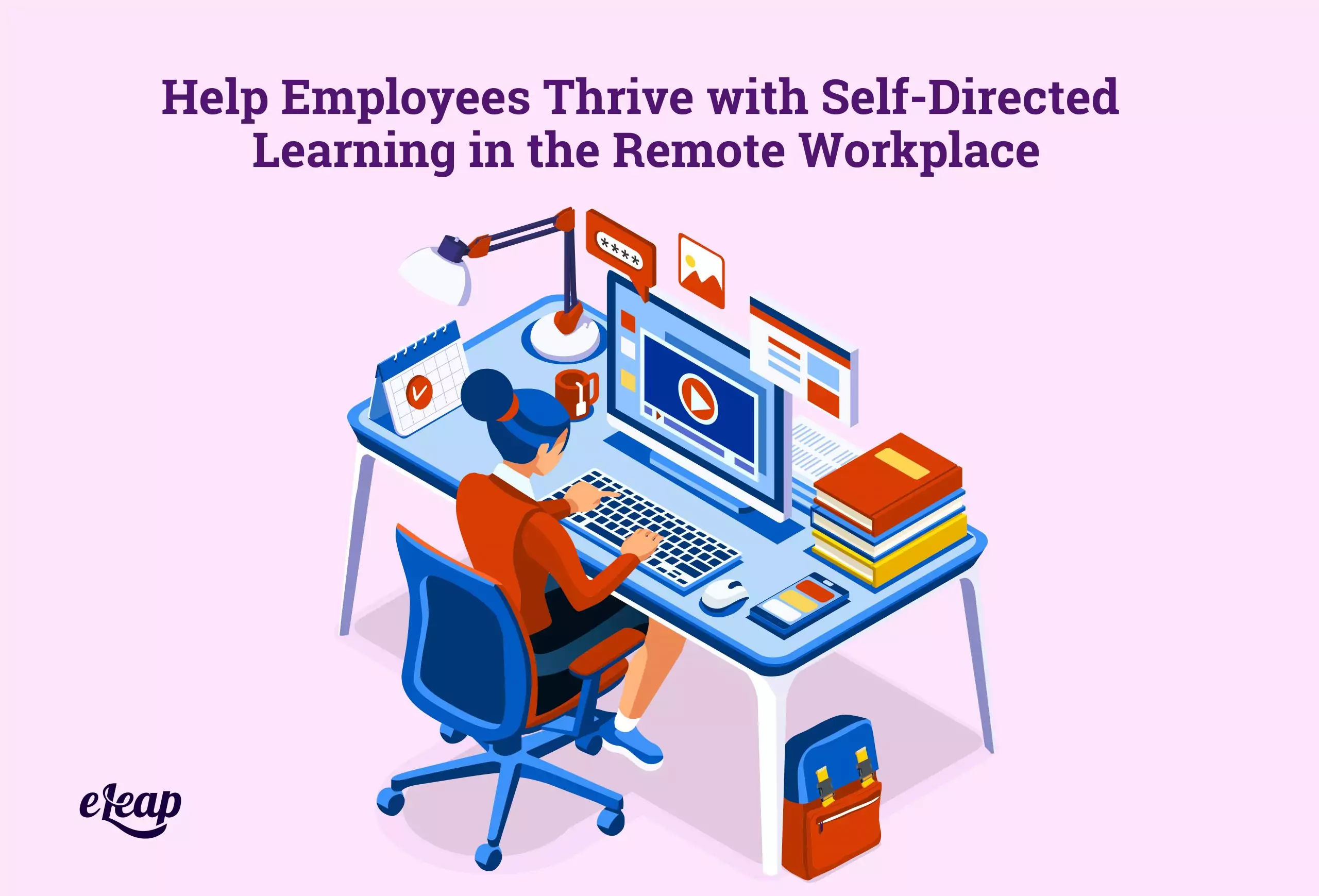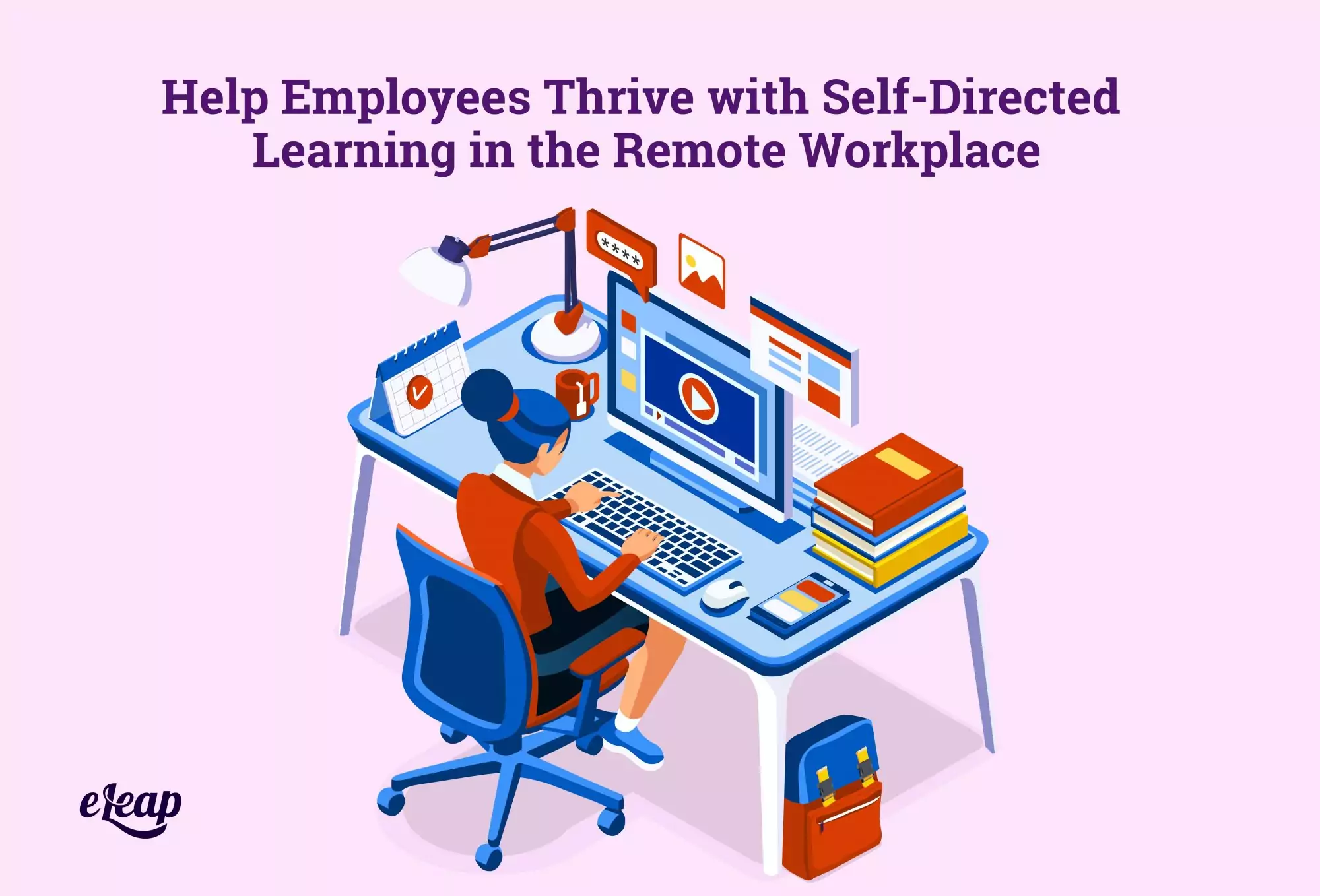Help Employees Thrive with Self-Directed Learning in the Remote Workplace

Self-directed learning in remote workplace is of great significance. For learners locked into a remote-work existence, progressing through corporate-mandated modules can be a slog. This is, at least in part, because those types of programs are not really designed to help learners master knowledge. They’re designed to build the minimum skills necessary for employees to function within their roles.

It’s a bit like the minimum viable product model in which a product is developed that just meets consumer needs, and is then launched with the intention of further development and refinement over time. The problem is that employees are human beings, not products, and if they are not engaged in their learning and work, they will look elsewhere.
Thankfully, there are ways that you can help employees thrive and move forward toward mastery with self-directed learning. Even a remote workplace poses no real issues here. In this post, we will discuss critical strategies necessary to encourage self-directed learning in the remote workplace.
Understanding Why Traditional L&D Programs Often Fail
Before we tackle self-directed learning strategies, it is important to understand why many traditional learning and development programs fail to deliver the desired outcomes. Many reasons exist for this, but some of the most common include the following:
- It Ignores Remote Work Specifics: Most traditional L&D strategies were developed before the pandemic and ensuing shift to remote work. They were not updated then, nor have they been updated in the time since. The problem is that without some adjustments, these strategies will never be optimum for a remote workforce.
- It Disrupts Workflow and Lifestyle: In the remote workplace, routine is an important thing. Workers must perform their duties when it best suits their lifestyle, while also ensuring that they can be as productive as possible. For instance, a couple that shares a small apartment might work during opposite ends of the day with little overlap so that they can focus on their respective tasks. Traditional learning disrupts this and creates chaos.
- It Doesn’t Speak to Mastery: As touched on previously, corporate training usually focuses on developing a bare minimum of proficiency. It does not focus on helping learners move toward mastery.
Encouraging Self-Directed Learning
Self-directed learning can fit within any lifestyle, accommodate remote work specifics, and drives learners toward mastery, not mere proficiency. How can you work toward that type of system, though? The tips below will help develop a strategy (or strategies) that you can implement within your own organization.
Important tips for a self-directed remote learning
Let Them Know about It
First and foremost, make sure your learners are aware of self-directed learning in the remote workplace for their learning and development. For many, this may be the only thing needed to launch their efforts and build engagement. This is particularly true for those who feel a lot of resistance to mandatory training (all mandatory training creates some resistance, but some employees are more resistant than others). Simply alerting your learners that they can control their progress and direction can do wonders for motivation and employee buy-in.
Pay Attention to Pacing
It is important to pace when you Tracking and monitoring are critical parts of managing the learning and development cycle. However, resist the urge to set an artificial pace for your learners. Self-directed means more than just the freedom to choose what they want to learn. It also means they can move at their own pace. If you negate that benefit, you will immediately reduce the benefits offered by the entire initiative. Give your employees the freedom to do what they want when they want and you might be surprised at the progress they make (and the gains in terms of information retention).
Reinforce the Message
If you are concerned about pacing, rather than forcing the issue with an artificial schedule, reinforce your learning message. With a remote workforce, you rely on technology for everything from work tasks and duties to meetings. Use those tools to reinforce the learning-focused message. Reminder emails work well, but you can also use message boards and even productivity tools like Slack to help you keep awareness of learning high across the entire organization.
Make It Possible to Learn All the Time
For many employees, it is not so much a lack of interest in learning, but a lack of daily opportunities. When something is not part of their daily routine, it quickly falls by the wayside. Design ways for employees to make learning part of their daily routine. You can do this in several different ways, from using wikis and knowledge-bases to job aids and mobile learning opportunities. It will likely require adding elements to your technology stack, but it can be done and the rewards will be significant.
Social Learning Can Help
Human beings are hardwired to learn from one another. While you may not be able to have face-to-face learning in a remote work situation, you can still build social learning into the equation. Not only will you find that your learners retain more information this way, but that they are more interested in taking part simply due to the social aspect of the process. Technology allows you to create social learning opportunities in many different ways, from using Facebook groups to creating your own user forums and message boards.
Get Feedback
One reason for some learners to disengage from your initiative is a lack of feedback and interaction. It can make the process feel disconnected and unimportant. To get around this, regularly seek feedback from your learners. Ask questions about the process, about the modules, about the content and delivery format, about their experience, and more. It’s all part of creating a conversation surrounding learning without forcing the issue.
Final Thoughts
Traditional learning and development strategies have their place. However, with many organizations still mostly or fully remote, those strategies are of limited value at best. That does not have to mean failure, though. By encouraging your employees to go the self-directed route, you increase engagement, boost information retention, and reinvent your L&D strategy to fit the modern world.